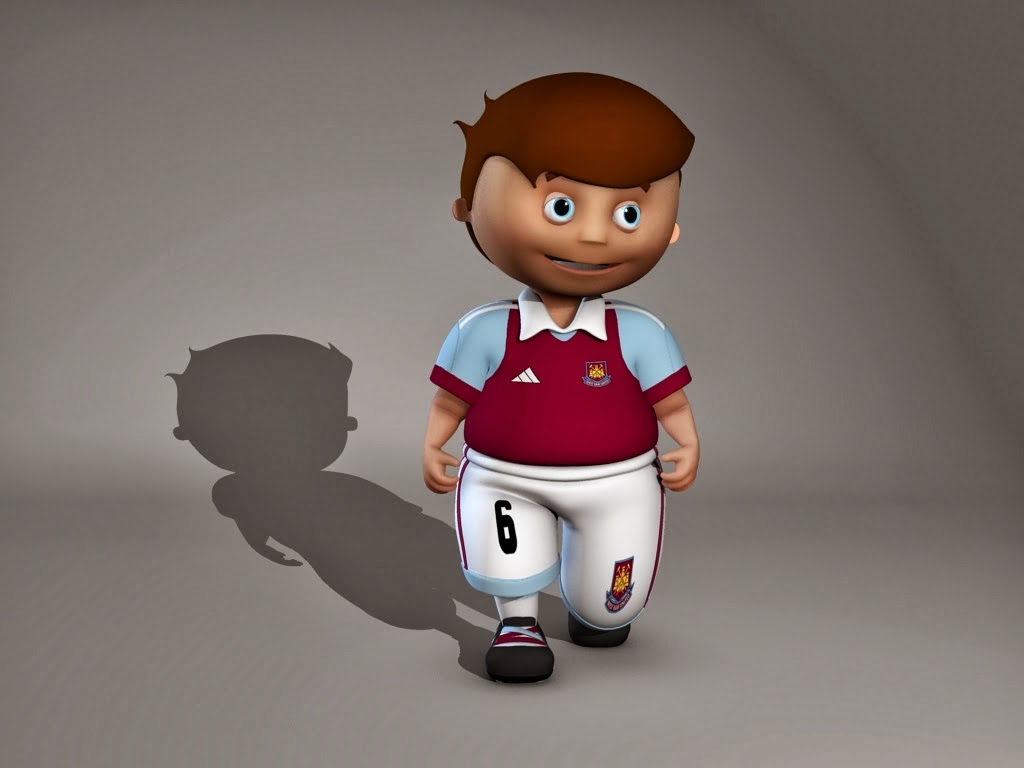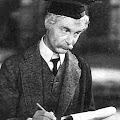January is a stoic month, none more so than for our third years, who have just spent the majority of it completing their 9,000 word dissertations. The Post With The Most is really not the most apposite platform for showcasing this particular milestone of studentship and vital rite of passage, but take it as read that we are very proud of our hard-working third years. It’s a very real achievement to first conceive of, and then complete, a major evidence-based investigation of this kind, and while the dissertation might very well lack the obvious allure of character designs and digital sets – make no mistake, we're just as impressed.
What I can showcase here is a selection of work completed by our final year students as part of their minor project submissions – also completed in January. For some of our third years, this deadline marked the end of one discrete project and the beginning of another. For others, work continues on their year-long productions. For all of them, this Spring term is the beginning of the end of their time on CGAA – or, as we would rather they thought of it, the end of the beginning of their careers as extraordinary creatives.
Like I said, January is a stoic month – and February’s not a huge amount better; so while we cast our eyes about impatiently for that first peep of daffodils, feast your eyes instead on these green shoots. For more information about any featured work, browse the individual student's blog by clicking their name.
Nat Urwin - Mother's Days
 |
| Mother's Days production drawing |
Mother's Days production document
Avis - Art Of
Character turnaround
Sasha Hart - When I Grow Up I Want To Be...
 |
| Tyler final render |
Tyler turnarounds
Joey Ku - The Carnival Of The Animals
 |
| Original character designs |
Character turnarounds
Emma Foster - The Futurists' Garden
The Futurists' Garden - Art Of
Plant form turnarounds
Polydoodle Pictures - & Son
 |
| Test renders |
 |
| Test renders |
Turnaround compilation
& Son animatic (V.2)
& Son - Art Of
Our Year Two students have embarked on their Adaptation unit, which very much marks the beginning of them thinking about themselves as final year students. It's a time for them to start thinking about their specialisms, their ambitions for the future - and also how to condense complex ideas into formats likely to be achievable in the inevitably intensive timeframe of their final year. Cue Adaptation Part A, which challenges our second years to devise and execute an 'Infographic' style animation that eschews for a moment the innate complexities of the Maya-based pipeline, and gets them focusing instead on conveying ideas snappily, engagingly, and with visual concision. Enjoy this selection of their developmental design work produced so far:
Emily Clarkson - The World Of Weird Wildlife
 |
| Character development 'Axolotl' |
 |
| Character development 'Blobfish' |
 |
| Character development 'California Condor' |
Akinbiyi Babarinde - A History Of Zombies
 |
| Zombie character design |
Alex Edmonds - The Top Ten Facts About Volcanoes
 |
| Modelling volanos for infographic |
Animation tests
Samantha Niemcyzk - The ABC of Procrastination
 |
| Development drawings 'C' |
 |
| Development drawings 'R' |
 |
| Development drawings 'U' |
 |
| Final artwork |
Back in December 2013, Rebekah Taylor from the Animation Archive @ UCA Farnham paid us a visit - and brought with her some original Henry's Cat storyboards by Oscar-winning animation-legend, Bob Godfrey. As a follow-up, all CGAA students were challenged to paint digital portraits of a celebrity in the Godfrey style. I'm sharing a selection of the resulting portraits here (there are many more, and all of them charming). Ultimately, the portraits will be displayed around the campus here as part of a pop-up exhibition, complete with QR codes linking interested parties back to the animation archive and Godfrey's original drawings.
 |
| Hannah Milliner |
 |
| Ayunie Adiana |
 |
| Josh Aldis |
 |
| Samantha Niemcyzk |
 |
| Ruby Newland |
 |
| Jake Bryant |
 |
| Scott Turner |
And from one exhibition to another: January is a month for making changes, time then to refresh the CGAA Corridor Gallery, which has been delighting passersby for months with its showcase of character designs and expressions sheets. The rationale behind that exhibition of student work was to better communicate to those outside of the CGAA community the role of drawing on the course. This latest exhibition seeks to demonstrate and champion the diversity of CGI itself, in so much as it singles out year three student Emma Foster's 'Futurist flora' as an example of CGI not associated with the production of narrative animation or character design. Emma's project exemplifies the unique ability of computer-generated imagery to visualise the 'never-built' and the unbuildable, the pipe-dreams of architects, and to give the semblance of materiality to the visions of artists - in this instance, the vision of an entirely synthetic garden as imagined by the futurist, Felice Azari. Not surprisingly, Emma's parade of artificial plants are drawing admiring glances from the product designers and the jewellers - and double-takes too, as the 'realness' of their appearance casts doubt on the method of their realisation.
 |
| The Corridor Gallery January 2014 - Emma Foster's No More Natural Flowers! |
 |
| The Corridor Gallery January 2014 - Emma Foster's No More Natural Flowers! |
Following CGAA's successful participation in last year's ACT project, in which our students, staff and alumni collaborated to create an animation inspired by composer Darius Milhaud's 1923 ballet, La création du monde, we've been challenged by ACT once again to visualise classical music in new and speculative ways. The piece in question is Giuseppe Verdi's mighty Requiem (1874), a musical setting of the Roman Catholic funeral mass.
On the evening of July 3rd and 4th at the Royal Opera House's High House Production Park at Purfleet, Verdi's Requiem will be performed live by an ensemble of 300 musicians - and beamed live via a screen into the Production Park's orchard. Our mission is to devise an innovative way of visualising the music of the Requiemthat will compliment and enrich this outdoor concert and bring new dimensions to Verdi's operatic masterpiece. Work on this project began back in December 2013, when Pete Wallace of Butch Auntie fame travelled to Amiens, France with a very specific remit. Pete's mission was to turn a live performance of Verdi's Requiem into raw data - not by recording the music itself, but rather by capturing the performance as experienced by its various participants. Uninspiring as it may seem, the great long list of numbers below is a direct transcript of Verdi's Requiem, as generated from moment-to-moment by the gesticulations of the orchestra's conductor, Arie van Beek, who was wired up to Kinect technology for the duration of the performance. Pete was similarly able to capture the Requiem via the activity of the lead cellist's arm and by the heart-rate of a member of the choir. In simple terms, Pete came back from Amiens with all the vivacity and verve of Verdi-performed-live encompassed within a series of spread-sheets.
 |
| Conductor Arie Van Beek's gestures translated into numerical data via Kinect technology |
Our creative task now is to translate these numerical expressions of music into something extraordinary. It's early days, and the precise form our visualisations-of-Verdi may take on that July evening in the High House orchard are as yet unknown, but CGAA Alumni, Ethan 'Class of 2012' Shilling has begun the work of turning spreadsheets into visualisations via Autodesk Maya.
Exactly what happens next is uncertain. But what happens will happen on the ACT blog, where the development of this project will be archived exhaustively from now until the performance in July. Exciting times. As of now, CGAA's Mission Verdi is go.
The Final Word...
“Negative results are just what I want. They’re just as valuable to me as positive results. I can never find the thing that does the job best until I find the ones that don’t.” Thomas A. Edison









Great job everyone! : )))
ReplyDeleteFantastic videos. I like all the videos. These videos will encourage the animated video maker
ReplyDeleteto be professional & help them to get a standard vision about animation video. Thanks.